The good old days of bodybuilding… when every boy and man marveled at the classic physique of Arnold Schwarzenegger, Franco Columbu, Frank Zane, Lee Haney, Samir Bannout and other greats of the 70’s and 80’s. These men were legends and were revered by some almost as gods. The old school bodybuilders were ambassadors of physical culture and beacons of inspiration. They motivated generations of fans to start lifting weights and strive to become their best selves.
The stories and triumphs of these charismatic champions were so captivating that many enthusiasts even took up competing because they wanted a taste of that bodybuilder’s glory.
Who wouldn’t be inspired? The physiques of this golden age had the perfect mix of muscle mass and definition. Their symmetry was reminiscent of Greco-Roman statues. The way they posed onstage was nothing short of theatrical performance.
In this era, bodybuilders were seen as big, strong, athletic, and mentally tough, yet also easy-going, classy, artistic and poised.
Perhaps the best depiction of this champion’s persona was seen in the documentary film Pumping Iron when Arnold and Franco met with the ballet teacher to learn how to move fluidly and transition between poses.
But at some point, probably in the 1990’s, there was a shift, where the aim changed from looking classical and moving with grace, to seeing who could be the biggest and most freakish on stage. Why? Well, big and freaky sells, right? As long as ever-increasing levels of muscle mass kept wowing fans, the auditoriums kept filling up. At the same time, the athletes wanted to keep improving. But did this “progress” go too far?
If you look at high-level pro bodybuilding today, you’ll see many of the top placing athletes are freakishly huge, they have bloated bellies, and they lack the aesthetics of the physiques from Arnold’s era. Arnold himself noticed this trend and voiced his opinion at last year’s Arnold Classic:
“Look at the old days when Steve Reeves won. When you saw Steve Reeves at the beach you would say, ‘I would love to have this guy’s body. Wow, look at how beautiful this man looks.’ But that’s not what you can say about the guys who win today. For example look at the guys with their stomachs sticking out. No one can pull in their stomach and stand on stage with a vacuum and look athletic. What happened? It used to be that they all had a V-shaped body. Now it just doesn’t look right. So we have to make sure the judges are rewarding the right guys. Because if you reward the right guys, then everyone will start training to have a beautiful body again.”
Many fans and athletes wondered if this trend toward size at all costs would cause bodybuilding to lose popularity, become an even smaller sub-culture, or even die off completely. But others kept high hopes of restoring bodybuilding to the beauty and purity of its glory days. I’m here today to tell you that we are starting to see that positive shift.
In 2011, the Men’s Physique category was introduced in the NPC (National Physique Committee). This was a step in the right direction for getting back to a more appealing look. Ironically, even the physique athletes started getting bigger and bigger as each year passed, to the point where many of the competitors looked like bodybuilders in board shorts.
Now there’s another new category. In 2016, we have the debut of Classic Physique, and this may be the sport’s saving grace. Classic physique is unlike any category before because you can only weigh so much at a given height. This rule sends a message that excessive bulk not only is not wanted, it’s not allowed. Combined with the rest of the judging criteria, which will reward the classical look, this is the next step toward bringing back the golden days of bodybuilding, but in a unique new way.
This is a time we can really get excited for the sport because this will also give more guys the opportunity to compete since the classic look is more attainable by the average guy. It takes hard work to do any kind of physique or bodybuilding competition, but now the dream is alive and available for anyone with the heart, determination, and patience to set the goal and go for it.
Even if you have no intention of competing, you can embrace the spirit of this new movement and train for the aesthetic physique look for health, hobby and your own satisfaction. Let me give you a few ideas how.
The First Steps In Building A Classical Physique: Assessment and Expectations
Before setting specific goals for training or competition, there are three things you must do first.
1. One, you have to assess your physique objectively and be honest with yourself. Do you need to drop fat first before you build so you can even see where your muscles need more work? Do you have specific areas that need work? Remember, the classic look is about proportions and that means every muscle must be evenly developed – you can’t have weak body parts.
2. Two, you must have realistic expectations about how long it will take. A contest prep might take 12 or 16 weeks, but building a physique ready for the stage takes longer. I’ve been at this for more than 10 years. I’ve learned a lot in that decade including the importance of patience. As you embark on your journey, you will learn this too – it takes time!
3. Three, you must have realistic expectations given your genetics. Some men have a naturally broad shoulder girdle and a small hip and waist measurement. The length of your limbs also play a part in how your body looks. Everyone can improve their shape with proper training and nutrition, but your bone structure and muscle insertions can’t be changed. Some people have natural advantages that make them highly suited for physique competition. You may want to consider that when setting goals.
Once you’ve assessed where you are now and set reasonable expectations, you can start mapping out your training and nutrition plan.
How Do You Train for the Classic Physique Look?
For classic bodybuilding or physique training, the first two considerations are volume and frequency. To build the type of muscle size (hypertrophy) you need for the physique stage takes a substantial amount of exercises and sets (volume). You may especially want to consider your training frequency and ask yourself if you’re working each muscle or movement often enough.
At some point in time, probably in the late 80s or 90’s, the body part split routine became the standard training system for almost all pro bodybuilders. A typical schedule might break up the workouts into four or even five parts, such as chest day, back day, leg day, shoulder day and arm day.
I know this is how I learned to train at first, and many bodybuilders still use these schedules successfully today. However, it’s not the only way. Today we are seeing many classic physique competitors training with a higher frequency than you’d achieve with most body part split routines (certainly more than once a week).
Some experts theorize that the popularity of body part split schedules was influenced by pros who were drug enhanced. As more drugs were used or drugs got more efficient, muscle protein synthesis (MPS) remained elevated for a longer time. This, says the theory, is how the pros were able to grow using a super high volume and a low frequency of working each muscle.
It’s much different when you are natural. Recent research suggests that MPS doesn’t stay elevated for long and if you allow too much time to elapse between working the same muscle (like an entire week), you may be missing opportunities to re-stimulate MPS again. This might mean hitting each muscle twice or even three times per week.
This is definitely an individual matter. I know Tom trains on a 4 day bodybuilding split where he works each muscle with a high volume and a frequency of once every five or six days. That’s what works best for him. I train four or five days a week and I’m currently hitting each muscle twice a week. That’s what works best for me. If you don’t experiment with different frequencies (and volumes) you’ll never know how you might respond.
Here’s why this is important when you’re pursuing the classic physique look: An aesthetic body is about proportions and symmetry. You can’t have underdeveloped body parts. You can’t have indiscriminate mass either. Also, the vital “symmetry muscles” like the capped deltoids, and the V-shaped lats must be developed to their maximum. Training an important or lagging muscle with a higher frequency may be the key to balancing your physique and optimizing your shape.
What we’re talking about is priority training: Find your weaknesses and train accordingly. Create your schedule specifically to give your problem areas more attention. Classic bodybuilding is about creating an optical illusion, and with smart training you can always build up weak points and develop a more symmetrical physique regardless of your genetics.
Will powerlifts ruin your symmetry and classical lines? (The exercise avoidance myth)
Physique athletes and bodybuilders often use multiple exercises to work every muscle from every angle, and use specific exercises to target muscles that accentuate the classic shape. But are there popular exercises that could ruin your shape and symmetry? Many people think so…
“Don’t deadlift. It makes your obliques thicker and gives you a blocky waist.”
“Don’t squat. It makes your hips wide.”
We heard that years ago and we still hear it today. But this is simply not true. Sure, your core is engaged during these heavy powerlifts, but that doesn’t mean the muscles in your midsection will get too big. On the other hand, you certainly won’t maximize leg growth doing leg extensions and leg curls alone and probably not even by adding leg presses. And few if any exercises will add thickness to your upper back like deadlifts.
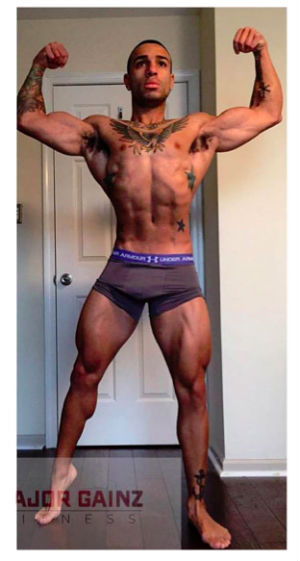
Deadlift and squat if you are physically able. These are great compound lifts that properly programmed, can add serious muscle to your frame and are unlikely to make you blocky. I squat regularly. I also deadlift and my max was 455 X 1. I was happy with that as a natural athlete weighing 171 lbs.
I am currently prepping for a show, and the photo to the right is how I looked as of last week:
You can judge for yourself, but I don’t think squats and deadlifts have given me a blocky waist or big hips. But I do think the squats have helped me develop my quads and the deadlifts have improved my back. If you have a wide hip or waist bone structure, it’s a matter of genetics, not too much squatting or deadlifting.
Classic physique doesn’t mean old techniques
When we talk about golden age training, many athletes think that means using only the most old school exercises and methods. I used to think that way too, but today I find it funny when people bash training modalities that aren’t barbells, dumbbells or traditional bodybuilding exercises. I learned that each piece of equipment is just a tool and you can get results with all kinds of exercises if you put them together into a well-rounded routine.
For instance, have you done hammer curls holding a kettle bell? Have you tried curls using the TRX? Pull ups on rings? Have you done high-rep deadlifts with kettle bells? Slammed a medicine ball? Trained abs on a swiss ball with pikes or jackknifes? Done cardio using battle ropes, barbell complexes or even an Airdyne bike or rower instead of a treadmill or elliptical?
Nothing beats the meat and potatoes of traditional lifts like squats, deadlifts, presses and rows and traditional cardio is fine if you like it and you need it. But there are so many different approaches and new tools today that could help you create your best physique ever, it’s in your best interest to be open to learning and trying them.
Do you have to do cardio? If so, when, what kind and how much?
Physique athletes are every bit as ripped as the best bodybuilders, so you might think they must do a ton of cardio. I would recommend however, looking at cardio as an adjunct tool for obtaining the body you want. Nutrition and progressive resistance training are the two primary drivers of all body composition goals, including fat loss.
Years ago, cutting for a contest may have meant two hours of daily cardio and many people felt they had to do it fasted as well. Almost any kind of cardio (high intensity intervals, aerobic intervals, steady-state cardio or metabolic resistance training) can serve a purpose, but not everyone needs it and everyone should put cardio lower on the priority list than resistance training and nutrition. It is possible to get shredded with diet alone.
The Modern Diet For A Classic Physique – Simplicity and Flexibility Are The Keys
To achieve the classic look, it’s mandatory to get your body fat very low. You have to be shredded. Body fat obscures muscle definition in your entire body, and accumulates especially around your waist, destroying your classical v-shaped torso. A lean, small waist, without any bloat, is the hallmark of the classical shape. How do you get it? The number one factor is not ab exercises, it’s diet.
Most people loathe the strictness of contest dieting. I remember when I prepped for my first bodybuilding contest and I had a real old-school bodybuilding coach. I still remember the restrictions. I had days with no more than 50 grams of carbs. I drank no more than 8oz of water during my water cut (which I realize now was dumb!) I ate only tilapia or chicken for protein. I ate only brown rice, no white rice.
I was freakin’ miserable! I even thought to myself, “This is NOT worth it!” I still feel that way about that 100% strict dieting approach. It makes you angry, hormonal, lethargic, slow in movement and thought, and overall, it’s a crappy experience.
The best fat-loss diet is the one that fits into your required calorie intake and your ideal protein, carb and fat amounts while being the most sustainable and the most enjoyable. Whether you want to call it “fitting your macros” or “flexible dieting,” or something else, this type of structured but non-rigid diet is the most sensible and effective approach. It’s the modern approach whose time has come.
For the most part, there’s no need to completely cut out the foods you love. You can enjoy a multitude of foods and be creative with recipes. This doesn’t mean eating junk food as long as it fits your macros. You need nutrient-dense foods while hitting your macros and sticking with your allotted calorie intake. But many of the restrictions you may have been told were mandatory for contest prep are simply not necessary.
Sweet potatoes versus white potatoes? It doesn’t matter. Brown rice versus white rice? Calorie for calorie, who cares?
Chicken or turkey versus pork or beef or fish? If calories are matched and macros are similar, it doesn’t matter. Wheat bread versus white bread? Granted, micronutrients and fiber for the day matter, but if it’s white bread occasionally or only once a day and all the rest of your food is nutrient dense, even that doesn’t matter when it comes to fat loss.
You may be skeptical at first, but the proof is out there. More physique athletes today are getting stage-ready with much more flexible diets than ever and their experience is much more enjoyable.
Are You Ready To Hit The Stage?
You dieted right. You hit your calorie deficit, but you didn’t starve yourself. You didn’t dehydrate. You didn’t remove entire food groups or follow rigid lists of banned or allowed foods. You may have been hungry at times, but you ate foods you liked.
You trained smart too. You included basic exercises that build the most muscle, and you used specialized exercises that brought up your weak points and emphasized symmetry. You did cardio if you needed it and just the right amount.
You’ve put in the work. You’ve done it – you’ve created the body you wanted. To compete, now you just have to show up on contest day right? Not quite. There’s more to consider if you want to succeed on stage. In addition to the obvious finishing touches, like tanning (and shaving down, if need be), the stage is where you must exude confidence and personality.
When you know you’re ready because you’ve done your homework, you’ll naturally be more confident. But you have to work on it consciously as well. You can build charisma and stage presence just like any other skill: with practice and positive attitude.
Your posing must be crisp. Imagine doing all that hard work, but placing poorly purely because you didn’t display yourself well. Be prepared to put in time for posing practice. Remember, you can’t just build your physique, you have to show it to the judges like a champion. And smile. Despite the amount of work it takes, competing can be fun. So have fun, and show it.
Competition day is incredibly long and difficult, but few experiences are more rewarding, because so few human beings do it. Getting in any kind of good shape takes work. Building a classic physique takes extremely hard work, and smart work as well. It’s a real challenge and may take years, not months, of work to master. Even then, for many, it’s a life-long process.
With that said, it is a lifestyle, and a rewarding one. It teaches you discipline, consistency, empathy for those having the same struggles, and it creates powerful shifts in your mindset which can improve every other area of your life.
If you’ve never competed before, there’s a lot to learn, but with the right coach, you can do it without missing a step. You can also bypass all the mistakes you’d make through trial and error if you tried to do it on your own. Contact me at coachlouie @ majorgainzfitness.com if you want to learn more about working with me as your physique coach.
In closing, remember that athletes who become the very best at the very highest levels of competition often have some genetic gifts. But if you’re willing to change and you’re willing to work hard, you’ll be surprised how far you can go. You’ll never know unless you try, and by making the effort, one thing you can be sure of is that you’ll become the best version of you that you can be.
– Coach Louie
About The Author:
With an approach to the fitness industry that is refreshing and just straight-up real, Louie’s greatest love is to help people and to inspire change and self-belief in all his clients. Over the years, Louie’s opportunities to train clients near and far have included people with varying fitness levels, abilities, wants, and needs. Louie is highly regarded in the fitness industry for his drive for truth, his hunger to learn and bringing a bit of swag to the game! Certified with NASM as a personal trainer and completing his Precision Nutrition Level 1 Coach training, Louie is a NPC Physique Competitor and has competed in INBF Bodybuilding and will next take his competing to NPC Classic Physique. There are many ways to contact Louie:
www.facebook.com/lgtnynj
www.lgthetrainer.com
www.instagram.com/louie_guarino
www.twitter.com/louie_guarino
www.youtube.com/lgthetrainer
Online Coaching/Inquiries – CoachLouie @ majorgainzfitness.com

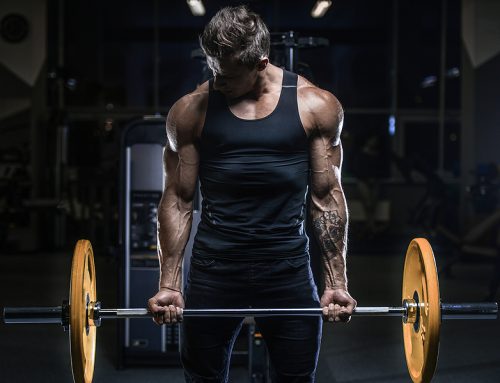
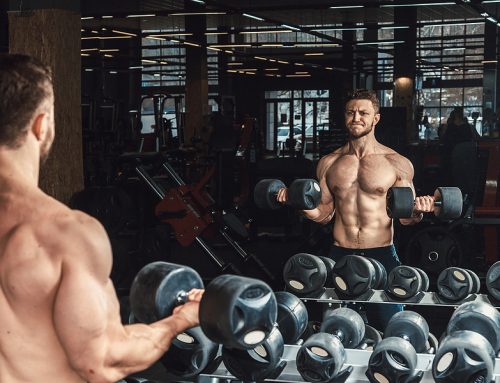
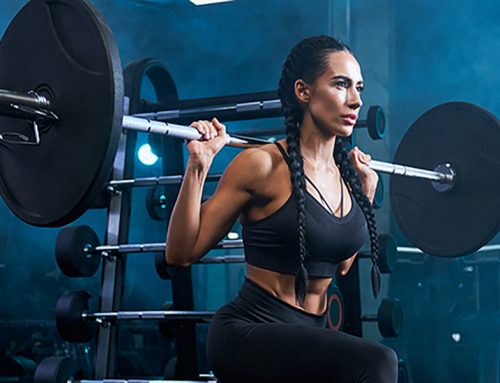
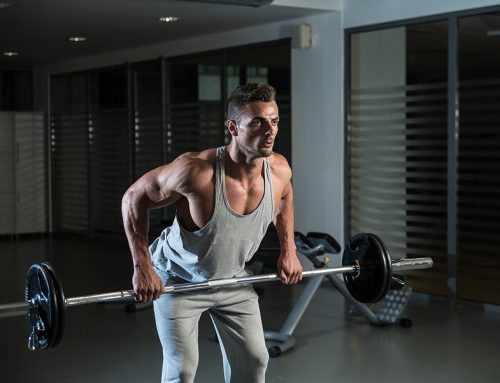
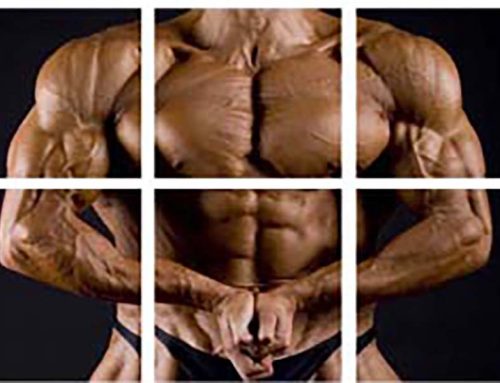
Thank you Louie! This is an awesome post, and also this is great news for the sport! Good luck with your upcoming contest!
TV!!
Thank you for allowing me to write this. I had a lot of fun writing it!
It is about time that professional bodybuilding was overhauled from “bigger = better” to the art form it once was. Whatever perversion wins contests becomes irrelevant so long as the rest of us can pursue an artistic physique that we find beautiful regardless of what the rest of the world thinks. I hope the over-sized look esteemed by misguided judges and fans isolates itself into the likes of professional wrestling and physique refinement rises on its own. The latter is top concert music what the former is to American Idol.
Lol that was pretty descriptive and on point. I have to agree. The physique is a work of art. Not something that’s supposed to be a freak show.